Royal Enfield Hunter 350 Review
Bike Review by Kris Hodgson
I recently headed down to Melbourne for a jaunt on the latest Royal Enfield model to arrive – no not the Super Meteor 650 – the Hunter 350, based on their 350 single platform and offers an entry level retro roadster at a competitive price.
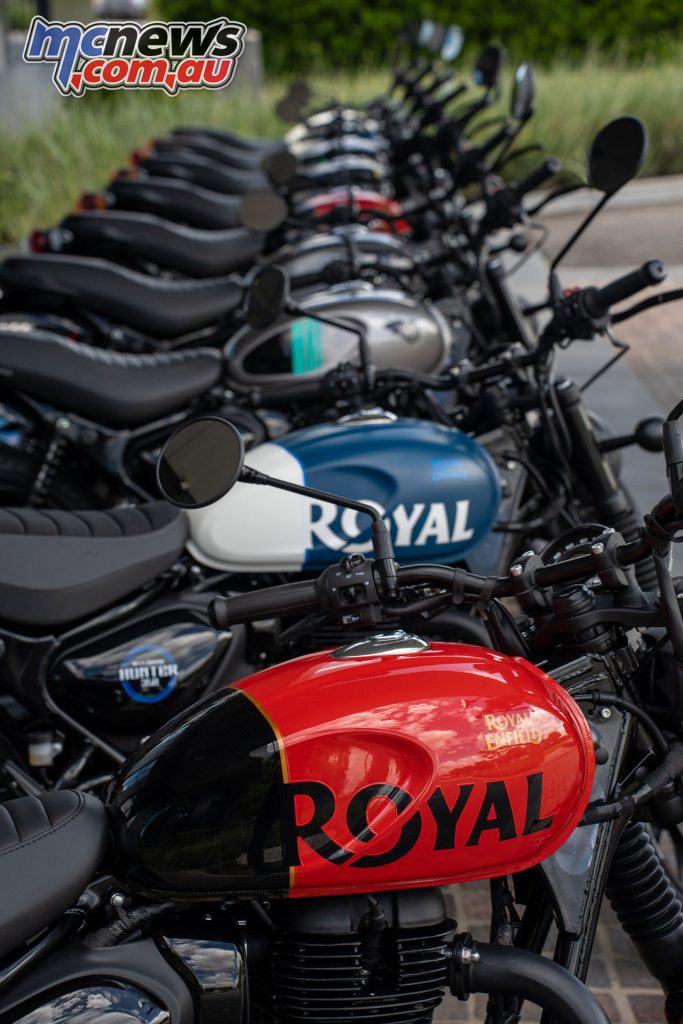
The bike was launched over in Thailand, but this marked the Hunter 350’s first run here in Australia, with the suburbs of Melbourne offering the ideal hunting ground and a glimpse into what a fun afternoon group ride of similarly minded riders will look like on the most affordable Royal Enfield.
The Hunter arrives starting at $7,590 ride-away in a well-rounded package for a beginner or perhaps returning rider, but as the styling suggests, the Hunter 350 is not a performance machine, even by LAMS standards. For those after performance in a LAMS package, they’ll need to look to the RE 650s, or a neo-retro elsewhere.
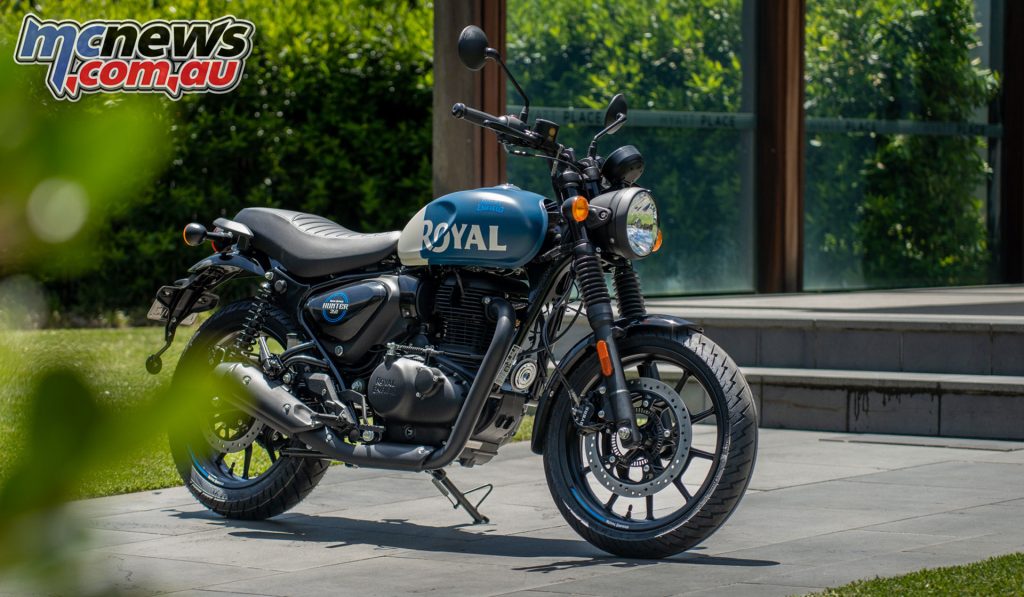
That kind of reflects how Royal Enfield have captured this particular niche, and apparently they’ve moved into the top five selling motorcycle brands in Australia, where competition in the smaller capacity lower performance classics has largely disappeared.
The highlights of the Hunter 350 are an updated chassis with the engine a stressed member, revised geometry and ergonomics plus model-specific gearing. For contrast the existing Meteor or Classic 350 is more cruiser compared to the Hunter’s roadster theme.
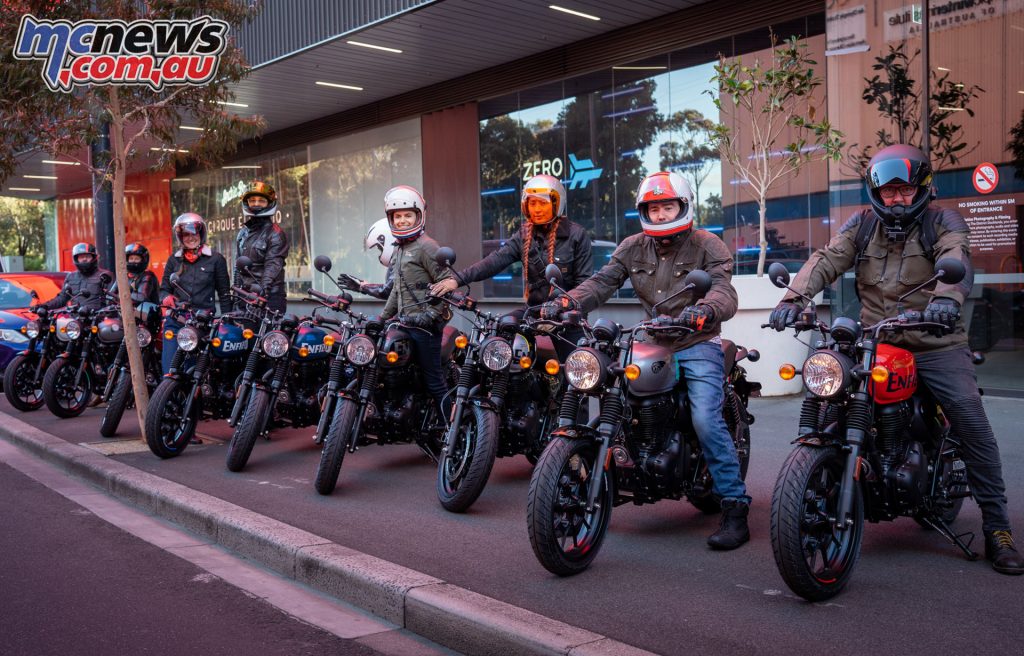
Throwing an eye over the bike, it looks good, blacked out engine as well as general componentry is a winner for me. There’s a comfortable looking seat, decent beefy tubeless tyres on 17 inch rims, a nice digital/analogue dash (no tacho) and good finish on the tank and painted panels. The bike has presence.
Switch-blocks are a little cheap looking which isn’t uncommon on LAMS bikes, but offer a nice tactile feel. The headlight is halogen, where I’ve come to appreciate modern LEDs.
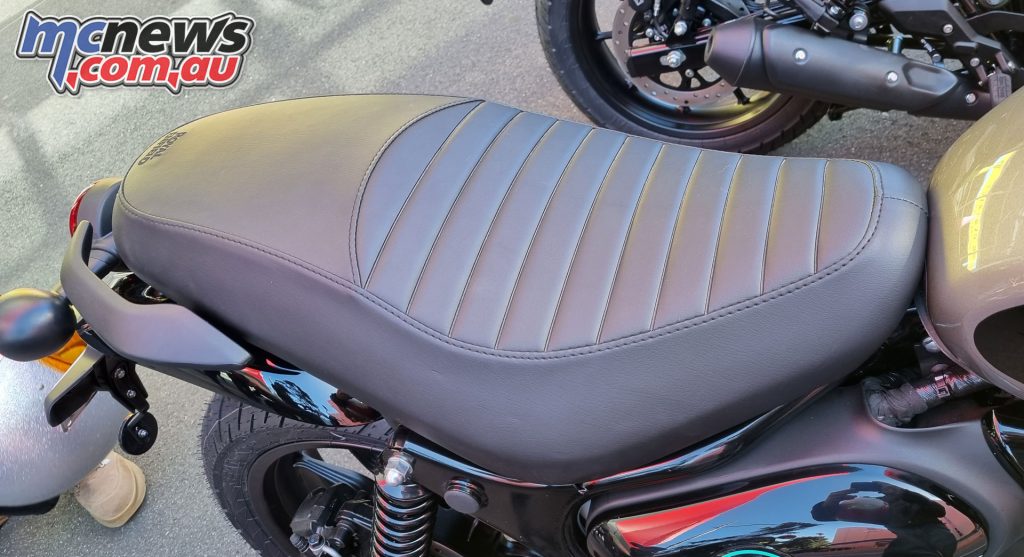
Turning the bike on and thumbing that starter brings the bike to life, although on a windy Melbourne day at idle you could be forgiven for not realising the bike is running. So quiet but also pretty smooth.
Giving the bike a rev there’s a bit of a waffly roar from the little 350, which I found myself testing at each traffic light throughout the afternoon.
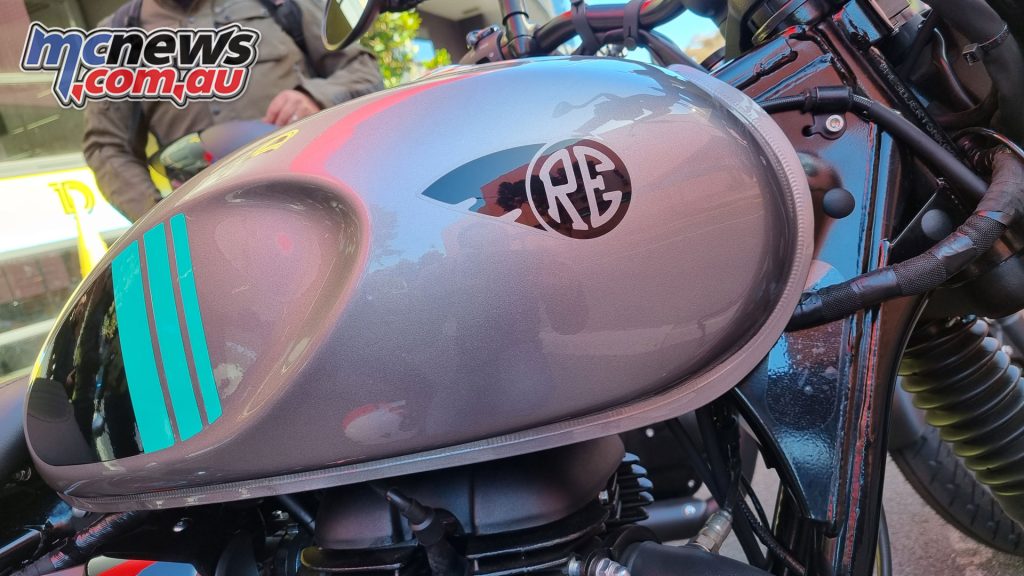
The combined exhausts notes of the pride, or gaggle of Hunter 350s, had some timbre to it and our procession certainly drew attention on the not-so-mean streets of Melbourne.
Setting off towards Docklands, there’s a forgiving throttle action, developing into a bit of punch if you’re aggressive enough. Keeping in mind of course that with 20 hp and 27 Nm of torque it is not exactly going to stretch your arms out. Outpacing bored and distracted drivers at a light, no problem, gapping anyone else who doesn’t want you to… less likely. Luckily the vast majority of drivers fall into the former category.
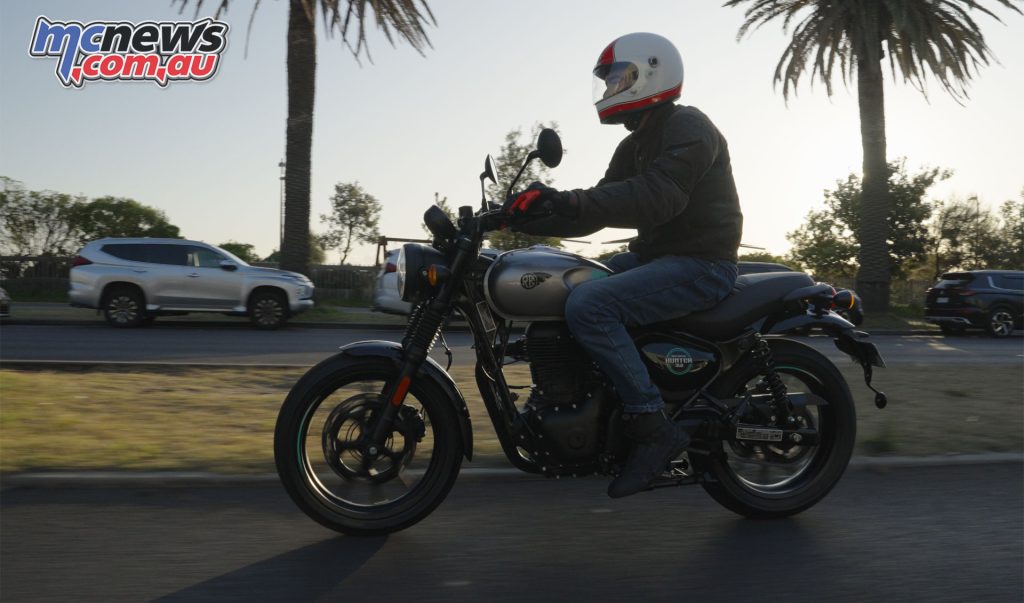
Rev out that engine and there’s a natural progression through the five-speed box. Fifth is more of a cruising overdrive, making up for the lack of a sixth gear, and the bike cruises at 80 or 90 km/h on the freeway.
You can hit the limiter but you’re probably riding wrong if it’s happening all the time, it’s just obvious when to up-shift and peak torque is much much lower than peak power, at just 4000 rpm. Sure you’ll be working on feel to determine where you’re at in the rev range, but that’s not rocket science.
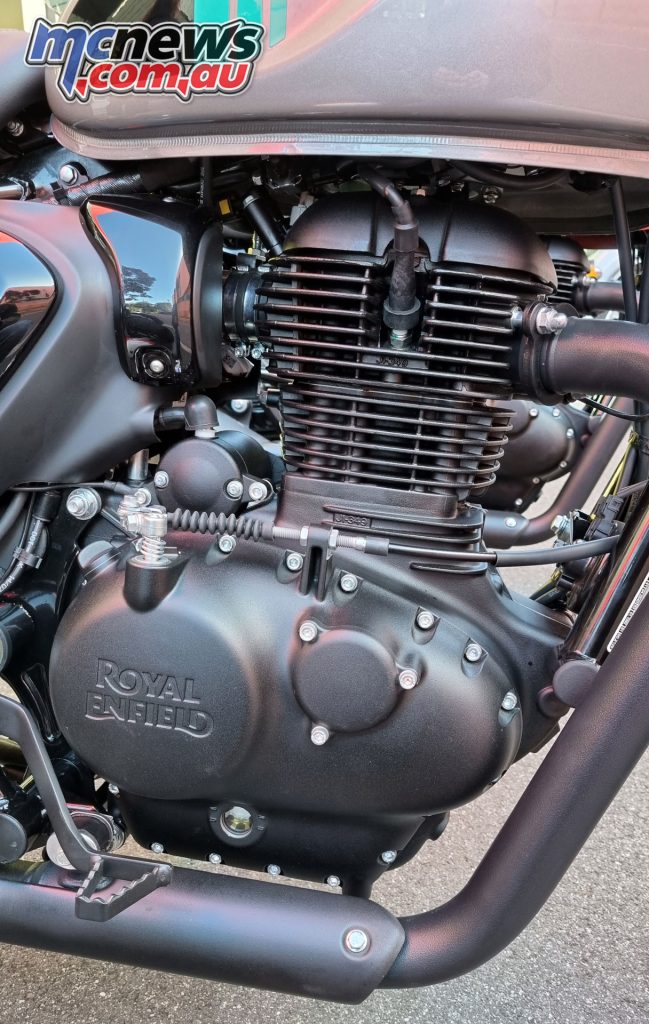
That gearbox is a little on the clunky side and I didn’t make a habit of going into neutral at stops as occasionally it takes a little wrangling to get back into gear, even if getting into neutral is easy. Of course these bikes were basically brand new with only a few miles on the clock, so not run in is an understatement. They had the new bike smell of components going through some of their first heat cycles too, which always feels like a bit of a privilege to experience.
Of course getting stuck in a line of stopped traffic on the freeway and needing to merge across into traffic moving at 80 km/h+ requires a little more caution (and a bigger gap) than I’m used to, even though my daily ride is still a sub-500 cc machine. I’d normally go wide-open-throttle and get up to speed in short order, but the Hunter is undeniably more languid than a bike with 40 or 50 hp, as you would expect.
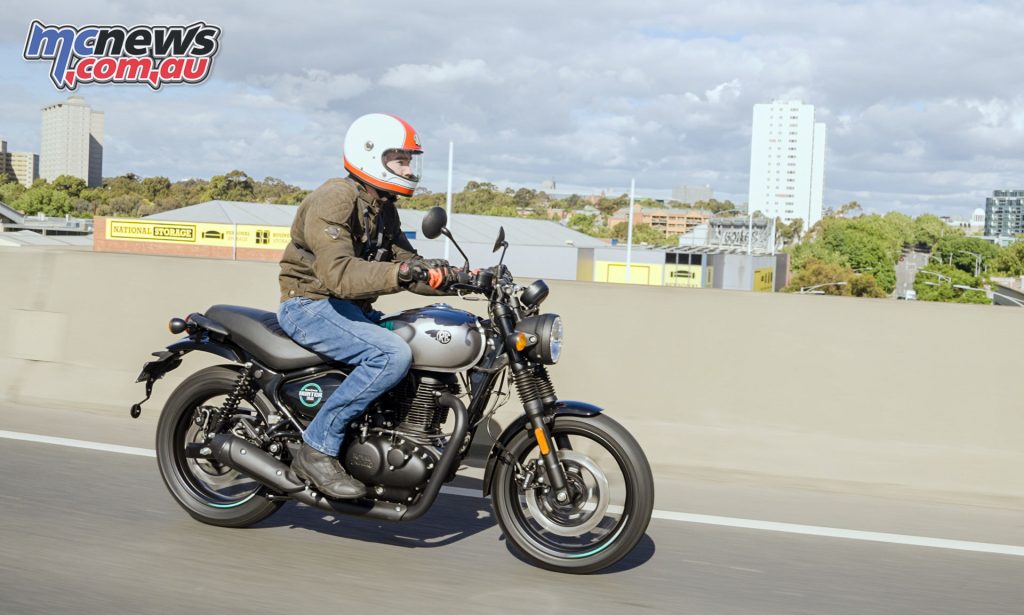
The riding position by contrast is relaxed, upright and natural, and for my 180 cm frame with 32 inch inseam the 800 mm seat height ensures an easy reach to the ground with plenty of room to spare. That was whether we were on the freeway trundling along with a bit more speed and wind resistance, or in urban conditions. The dash is simple and clearly visible, and while I did miss having a tacho, it’s not necessary.
Handling felt natural, the bike going where I looked, lean around urban corners revealed good stability and feel. The front end feels a bit heavy to turn at a standstill, but once moving the Hunter trundles along in an easy going fashion. We dodged the rain, so I’m not sure about tyre performance there, but for the dry I certainly couldn’t complain.
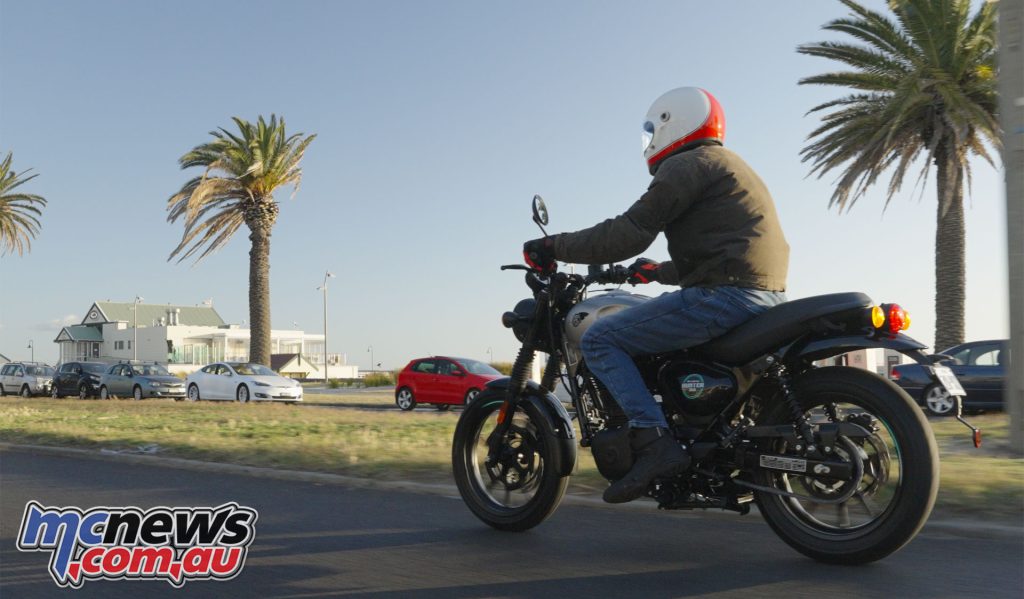
There was no knee down style riding with the loop we did, but again, this would never be the machine I’d pick for that kind of riding. Fun through some twisties at 80-90 km/h? Shouldn’t be an issue. Want to be a racer? Wrong bike.
The 41 mm forks and dual shock combo seemed well setup for my 70 kg, even without messing around with that rear pre-load, swallowing up potholes and manhole covers easily.
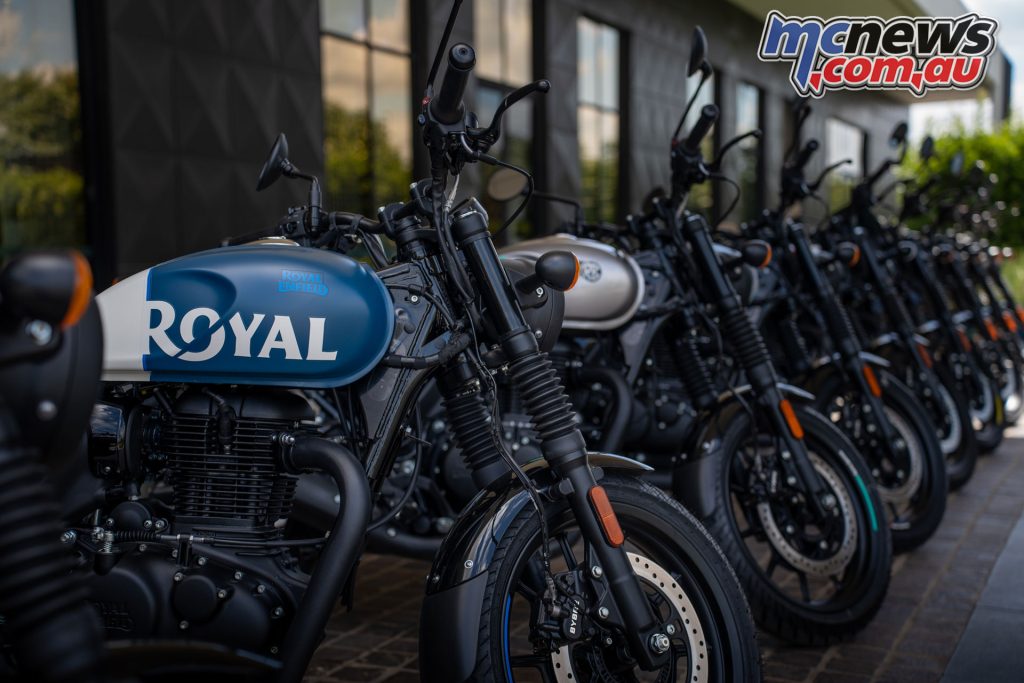
I would probably describe that handling and suspension package as unremarkable, but not in a bad way, everything works, nothing required any thought on my part, and I couldn’t really find anything to fault, it just worked in the short time I spent on the bike.
The disc brake front and rear is backed by ABS, not powerful enough to unsettle the bike, and a decent portion of your stopping power residing in aggressive downshifts into second and first gears. You’re simply never going to be pulling up the Hunter 350 from 150 km/h in a hurry (good luck getting that fast), so the set-up does the job, granted with more limited feel at the front than the rear.
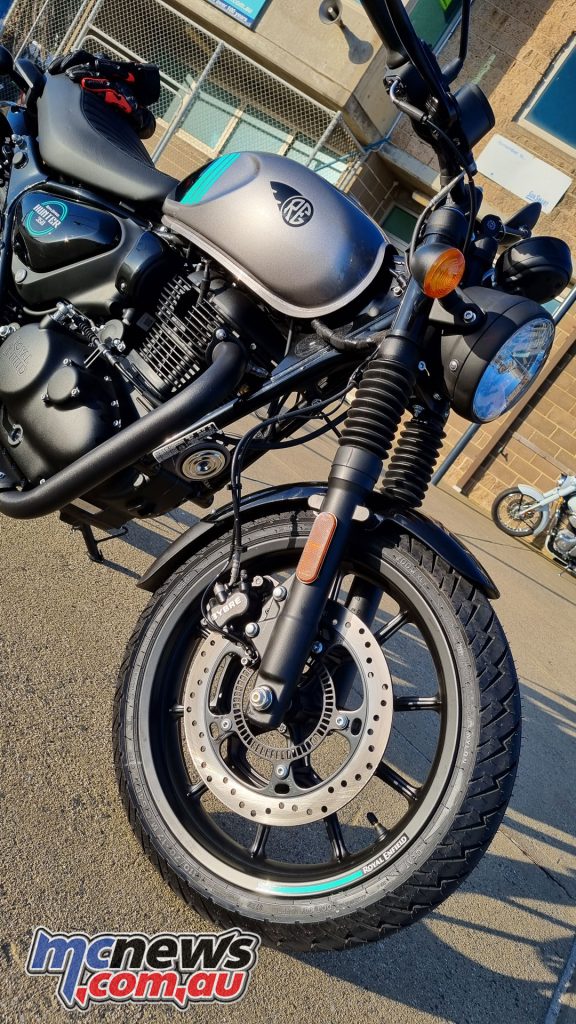
For me, riding solo that’s a package I’d be happy with, where two-up I’d want more power and more brakes, unless two-up was purely for trips to the coffee shop. Which it may well be for some riders…
Obviously spending an afternoon fanging around Melbourne with a few stops for a bite to eat and drink is always going to be a fun experience, especially with a group of riders all on the same machine, as there’s no performance differential and it adds to the comradery of the ride.
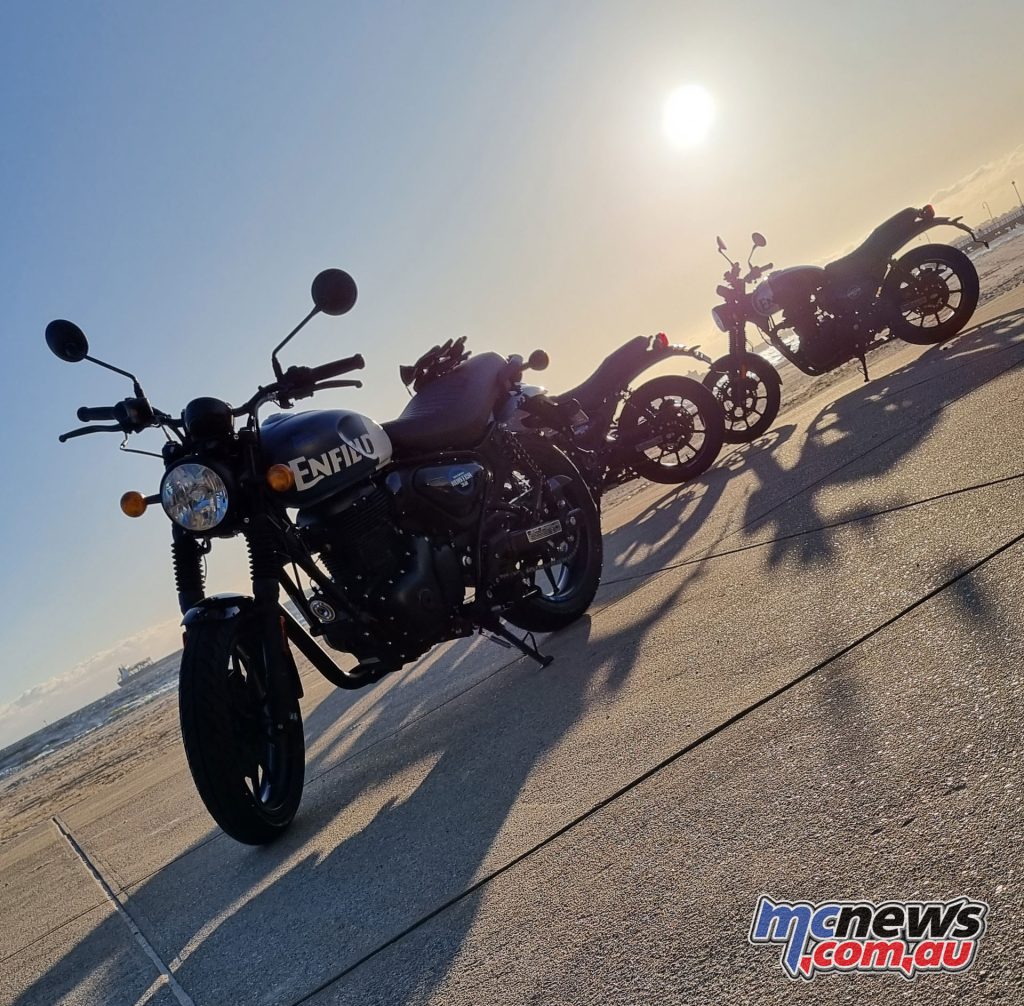
That’s not all the bike of course, however the Royal Enfield seemed an ideal steed for this kind of outing. Keep in mind this is basically the exact use case of this machine. 50-80 km/h commuting and cruising around.
The take-away for me was that despite refining the 350 model line, the Hunter 350 is still iconically Royal Enfield. That engine is smoother sure, and while on paper the power is lower than the old Classic 500, to me this is a step up, with the roadster theme a little more appealing to me personally to boot. This mirrors my thoughts when I tested the Rumbler 350 years ago, although again the Hunter seems a natural evolution from there.
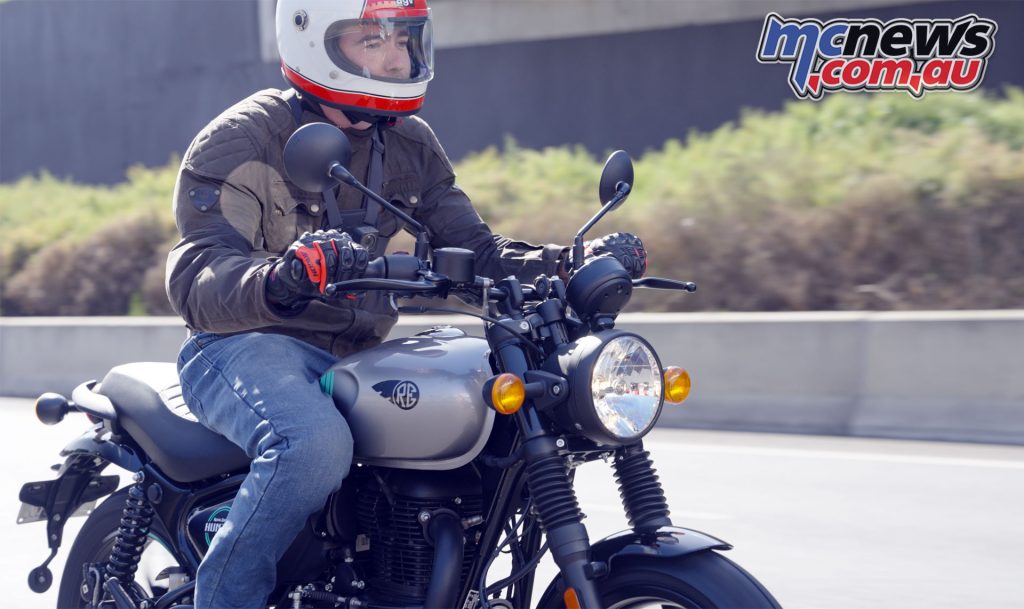
The bike put-puts along, the throttle is easily managed, there’s not going to be any drastic surprises, suspension and brakes do the job, clutch action is light, it’s comfortable and looks the business.
To me I’d say the Hunter 350 competes with old classic motorcycles, in that it offers the same character, but with more modern reliability, a comprehensive warranty and a good haul of accessories that’ll bolt on, with more sure to be developed as the market for these bikes in India is huge.
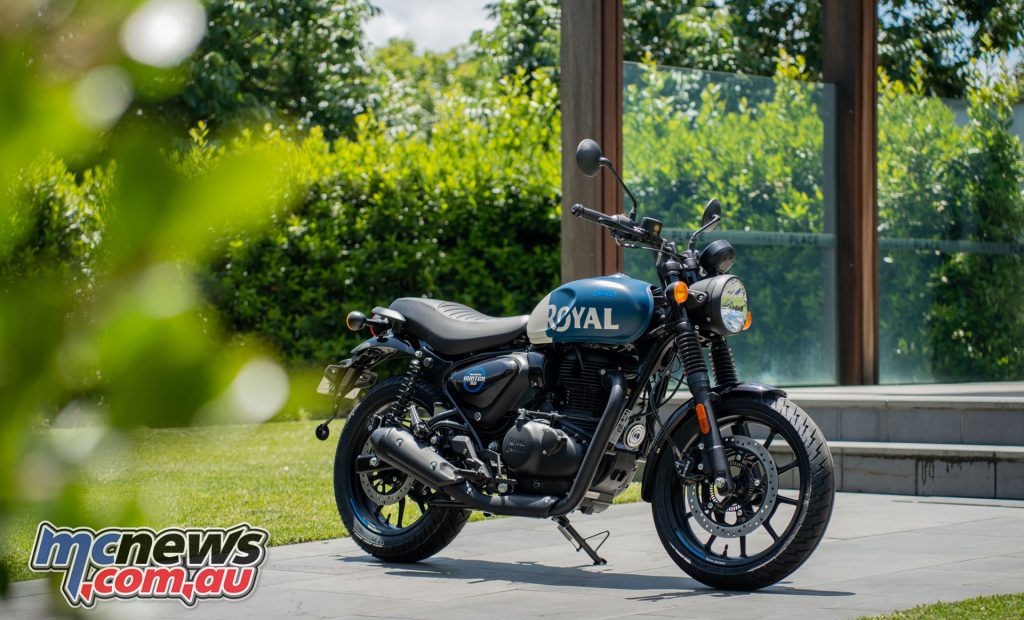
If this is the look you’re after, you can pick one up and just ride it, as maintenance and parts should be cheap.
The obvious caution is again, this bike is not for the rev head. I’d say it’s a restrained modern classic, with the emphasis on classic. Ideal for new riders and those who want to have some fun around town.
If you like the look of the Hunter 350 and this sounds like you, check one out.
Royal Enfield Hunter 350 strengths:
- Affordable buy-in, three-year warranty
- Fairly low 800 mm seat height, relaxed ergos and good comfort
- Offers authentic classic character
- Shouldn’t be intimidating to new riders
- Moves away from the cruiser styling
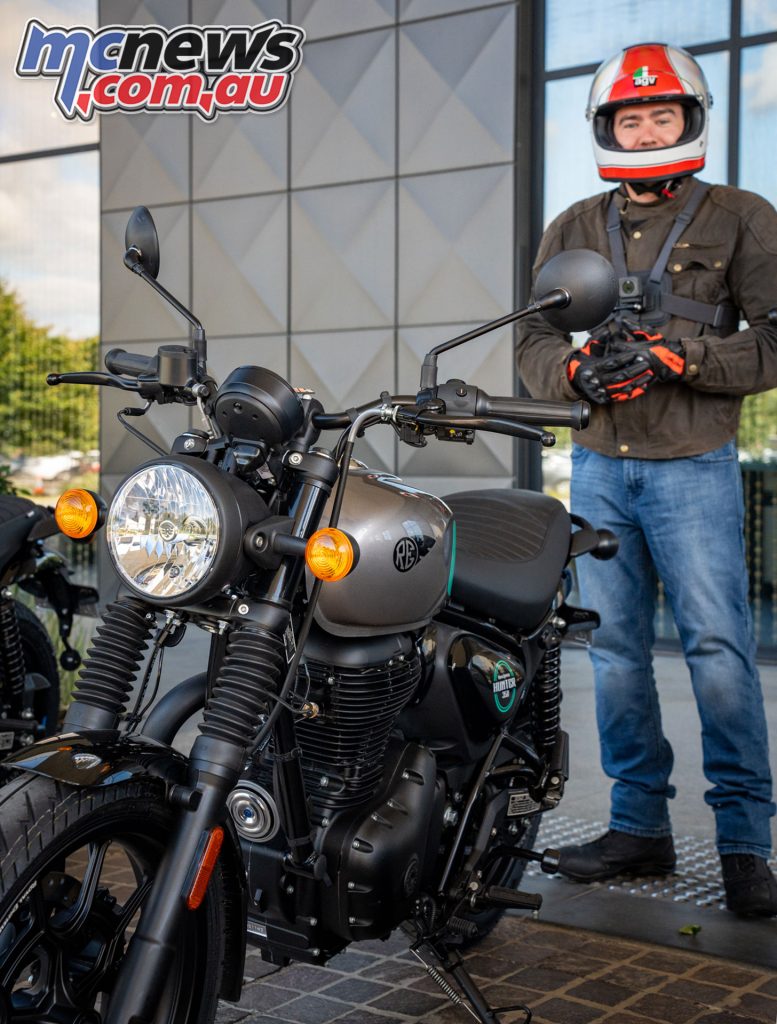
I would like the Hunter 350 more if…
- Lighting was full LED
- Bit more exhaust note at idle
For more information check out the Royal Enfield Australia website (link).
2023 Royal Enfield Hunter 350 Specifications
| 2023 Royal Enfield Hunter 350 | |
| Engine | Single Cylinder, 4 Stroke, Air Cooled |
| Displacement | 349cc |
| Maximum Power | 20.2 bhp @ 6100 rpm |
| Maximum Torque | 27 Nm @ 4000 rpm |
| Ignition | Digital electronic ignition |
| Gearbox | 5 Speed Constant Mesh |
| Fuel supply | EFI |
| Frame | Twin Downtube Spine Frame |
| Front suspension | Telescopic 41mm, 130mm travel |
| Rear suspension | Twin tube emulsion shock absorbers with 6-step adjustable preload |
| Tyre | Tubeless Tyres, 110/70-17″, 140/70-17″ |
| Front brakes | 300 mm rotor, 2-piston floating caliper, ABS |
| Rear brakes | 270 mm rotor, single piston floating caliper, ABS |
| Seat Height | 790 mm |
| Clearance | 150.5 mm |
| Wheelbase | 1370 mm |
| Weight | 181 kg |
Images by Jason Lau, Tommaso Fossati, Mathew Hayman























